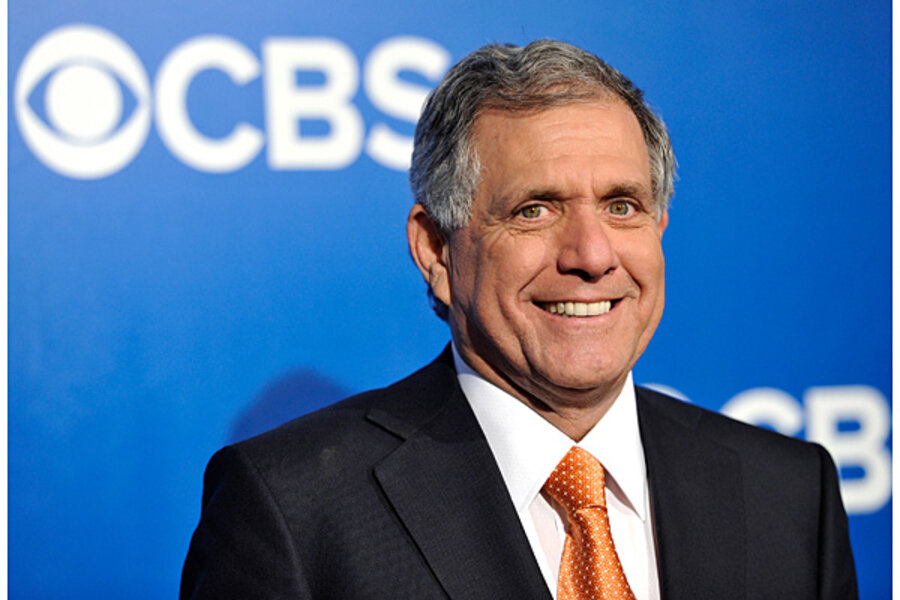CEO pay hits $10 million, 257 times worker pay. The gap's been bigger.
Loading...
In the economy’s emergence from the Great Recession, the recovery of the nation’s corporations and top earners easily has been the most robust. It will surprise few, then, that chief executive officers have become an eight-figure earnings group for the first time.
Annual pay among CEOs at large public companies reached a median $10.5 million in 2013, according to a study released Tuesday by the Associated Press and Equilar, a company that tracks executive compensation packages. The report, which examined regulatory filings of compensation packages for 337 company heads, found that CEO pay was up 8.8 percent, from a median $9.6 million in 2012.
It was the fourth straight year of gains following the recession, and now the typical CEO makes over 257 times the salary of an average worker in the US.
Most of the surge came because of stocks, which jumped 17 percent in value as part of compensation packages. The stock market was a key driver of economic growth in 2013, hitting record highs and gaining back everything it lost during the recession. Stocks on the Standard & Poor’s 500, for instance, jumped 30 percent last year. CEOs had a median $4.5 million in stocks last year, according to the study.
“Over the last several years, companies' boards of directors have tweaked executive compensation to answer critics' calls for CEO pay to be more attuned to performance.” AP’s introductory article to the study read. “They've cut back on stock options and cash bonuses, which were criticized for rewarding executives even when a company did poorly. Boards of directors have placed more emphasis on paying CEOs in stock instead of cash and stock options. The change became a boon for CEOs last year.”
So, who were the study’s CEO standouts? The highest-paid was Anthony Petrello, who runs the oilfield services company Nabors Industries and made $68.3 million last year, mainly due to a contract restructuring. Oracle CEO Larry Ellison likely would have topped the list, but Oracle files its financial paperwork later in the year.
The top-earning female CEO was Carol Meyrowitz, who runs the parent company of discount retailers T.J. Maxx and Marshalls. The median pay of the top executive women was actually higher than that of their male counterparts ($11.5 million vs. $10.5 million, respectively), but that’s no victory for gender equality because there were only 12 female CEOs surveyed, compared with 325 males.
Rodney Sacks, the CEO of Monster Beverages, got the biggest raise in the study – when the company’s board of directors awarded him stock options, his compensation package skyrocketed 622 percent in value, to $6.22 million.
The Equilar/AP findings cast more harsh light on the widening wage gap in the US, where worker salaries have stagnated as corporations and the richest Americans get the bulk of the benefit from economic growth. Worker wages only increased 1.3 percent in 2013, according to the Bureau of Labor Statistics (BLS). A typical worker would have to work for 257 years to make a CEOs typical salary.
As big as that gap is, however, it’s not unprecedented. In fact, it was nearly twice as high at its peak.
Astronomical CEO pay is a relatively new economic phenomenon. Between 1960 and 1990, CEO compensation hovered well under 100 times worker pay, according to figures from the Institute for Policy Studies. That changed in the early 1990s, when companies began making stock options a bigger part of executive pay. At its peak around 2000, pay packages for CEOs in the S&P 500 averaged 525 times that of average worker pay.
Regulatory scrutiny, shareholder push-back, and the stock market crash tempered CEO pay during the Great Recession, and chief executives made a mere 181 times more than their workers in 2009. But a bullish stock market has them heading skyward again. That is, if shareholders will tolerate it: Earlier this month, AP notes, major shareholders for the restaurant chain Chipotle voted against huge increases in compensation for co-CEOs Steve Ells and Montgomery Moran, and investors in general are becoming more outspoken when a company’s executives don’t act in what they feel is their best interests.
“It used to be shareholders pushing against boards who were buffering the CEOs,” Harvard Business School professor Rakesh Khurana told Bloomberg in 2012. “But now investors are telling directors who should be the CEO and how management should run the company."






